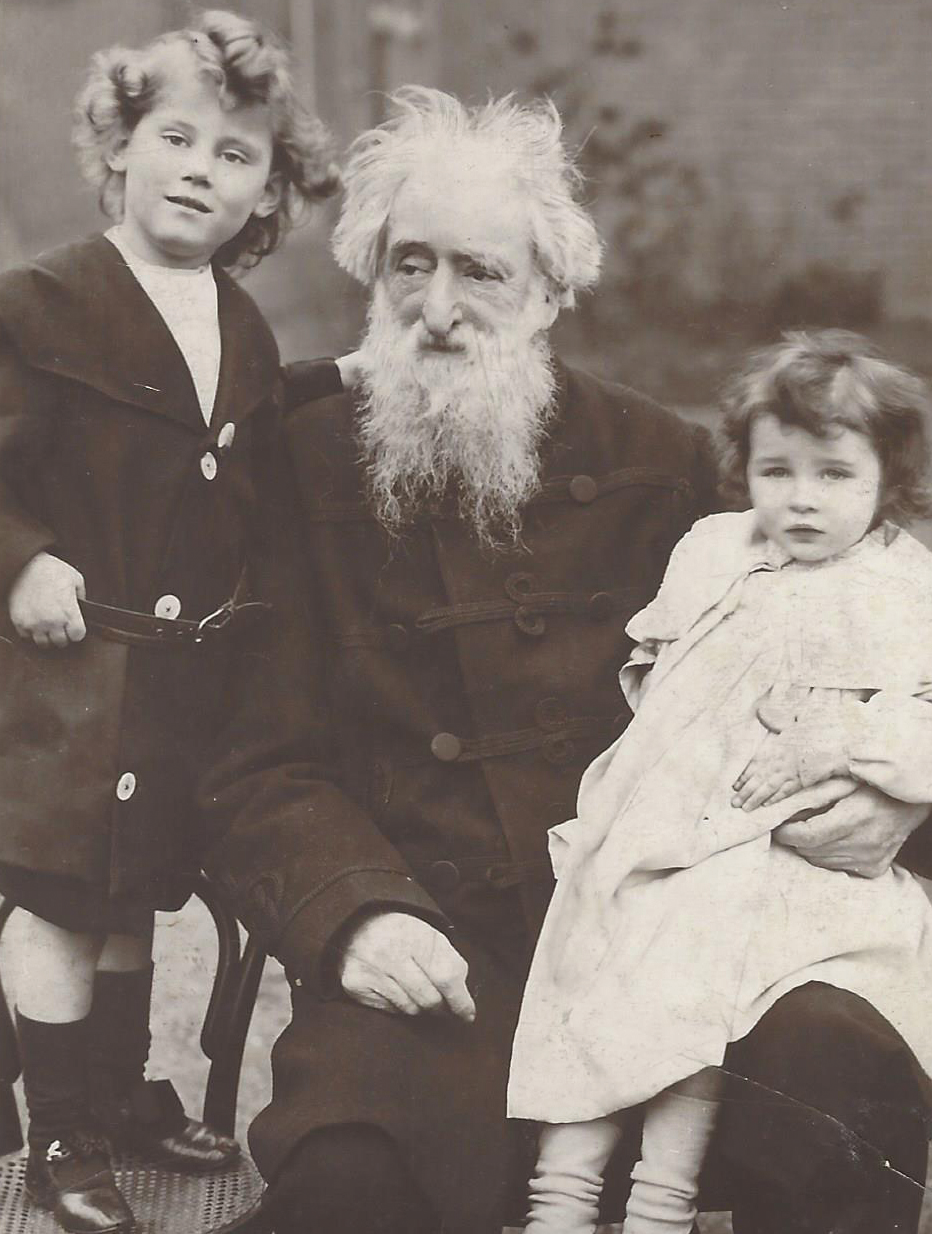Raising Up Child Saints & Soldiers
To the very end, General Booth couldn't ignore his "little soldiers."
Chicago, Illinois. October 1907. At age 78, William Booth was growing weary after preaching night and day during his final worldwide tour. Despite this, he pressed forward, seizing every opportunity to preach the gospel and inspire the saints. One afternoon, his daughter, Evangeline had persuaded him to lie down on a sofa in an upstairs room to get some rest. After her father promised not to move, Eva went down to prepare him a cup of tea. Hearing the sound of footsteps across the kitchen ceiling, she returned to the room to see the General pacing restlessly, his face wet with tears. “I’ve been thinking of all the sufferings of little children, the children of the great cities, and I can’t rest, I can’t rest!”
“The importance of the junior work is in my estimation so great and so nearly allied to the goodness, happiness, and godliness of the next generation that were I not burdened with so many toils and anxieties, I would gladly devote the rest of my days to the promotion and welfare of the young people.”
WILLIAM BOOTH
In Nottingham, England at the age of 16, William began preaching on “Kid Street.” There he attracted children living in abject poverty and marched them through the front doors of Wesley Chapel, seating them in the best pews. His heart broke on hearing that these “outcasts” would only be permitted entrance to the chapel through the back door and to sit on obscure benches hidden from view of those paying for their seats. It was then that the future founder of The Salvation Army decided that children would have a prominent role in his ministry.
Catherine Mumford the future wife of William Booth, first experience with youth was when she led a Sunday school class of young women between the ages of 12 to 19. Little did Catherine know that sowing the seeds of transformation and mission in these young leaders would reap a harvest of hundreds of thousands of women who would embrace their calling in childhood.
YOUNG SOULS THEIR PRIORITY
When William and Catherine Booth launched the East London Revival Society in July, 1865, East London’s children, known as “street urchins,” had to fend for themselves as their parents worked 16-hour workdays. Alongside physical malnourishment, their resilience to survive despite an absence of nurture forced them to grow up quickly and band together to fend for themselves. East London was teeming with hundreds of children who would invade the streets by day and populate the rooftops by night. In the Limehouse district, a “penny gaff” was opened—a nickelodeon-style theatre designed to entice children into alcohol and drug addiction, gang activity and child prostitution. The Gaff would regularly be raided by London’s police, only to resurrect within 24 hours by another adult ready to capitalize on the exploitation of lost boys and girls.
While the Society grew into the East London Christian Mission, the Gaff represented one of the notorious fortresses of darkness in which the devil was recruiting the lives of “the last, the lost, and the least.” This infuriated William and Catherine, who hatched a plan to wage war for the souls of these children. In September 1868, the Gaff was once again raided by the police, and the Booths bought the enterprise, using most of the budget of the East London Mission! They transformed the penny gaff into the Limehouse Mission Station. It was one of their most significant victories and inspired a young Thomas Barnardo to meet with William at the Gaff to seek permission to create the East London Children’sMission.
The Booths placed their chief Secretary of the Mission, James Rapson, in charge of their own Children’s Mission and had their older children, Bramwell, Kate, Ballington and Herbert join as young leaders. Rapson stayed with the Mission until 1872 and helped grow a variety of children’s outreaches including feeding programs, ragged schools and Sunday schools. Carried on by Mary Billups and eventually the young Booths, these initiatives continued to evolve into a thriving part of the Christian Mission.
FROM SHAM TO SALVATION
The “new measures” of revivalism, which influenced the strategy of the expanding Christian Mission, placed transformation as the evaluative tool of every innovation. By 1875, an internal conflict erupted—driven primarily by the methodology employed in Sunday schools. Some evangelists were willing to settle with reducing Sunday schools down to literacy training and didn’t place value on the transformation of the child. This “sham” approach was inoculating children from that possibility of true salvation by providing them a surface knowledge of the gospel which did not penetrate the root of their spiritual and moral identity. Realizing this was presenting a mirage which appeared like an oasis, but left children spiritually disillusioned, was for William and Catherine tantamount to a crime against humanity. The Booths chose to ban the use of Sunday schools until a better strategy could be deployed. To be clear: they did not prohibit children from the mission, nor the study of the Bible—but rather an inefficient and ineffective methodology.
This line in the sand fueled a reevaluation of the entire Christian Mission and led to a three-year search for a new model which would place salvation at the center of every aspect of the organization. Unveiled in 1878 as The Salvation Army —the restructuring helped lock transformation as the absolute non-negotiable of the movement. During this time, Catherine wrote on the value of children, but the right model for scaling children’s work had not yet emerged.
It was only in July 1880 in Blyth, England, when a young Captain John Roberts discovered the solution. Roberts was holding successful meetings, filling the biggest buildings in town. The challenge of space led him to put up a sign prohibiting children from entering the meetings so as many adults as possible could attend. When Roberts turned away two children seeking salvation, the Holy Spirit opened his eyes to the absurdity of this strategy—and permanently turned his heart towards the forgotten children.
Roberts begged the children to come back and began to hold meetings exclusively for youth. That same hall was filled with hundreds of children who, when the invitation for salvation was given, came forward to the Mercy Seat and were wholly transformed by the blood of Christ and empowered with holy fire of the Spirit. Roberts witnessed these children getting saved and sanctified.
LITTLE SOLDIERS SAVED AND ENROLLED
His is practical training with adults had taught him that as soon as a person was saved, they should testify, be given a job and made a soldier in the Army. The love for these young neighbors and the logic of applying the same methodologies as adults led him to enroll these “Little Soldiers” and employ them in the battle to reach the next generation.
When his divisional commander, Major James Dowdle saw the incredible work that Roberts was doing, and knowing the Booths’ insatiable search for a new method, he telegrammed headquarters to report on this innovation. Roberts was immediately appointed to headquarters to scale Little Soldiers throughout The Salvation Army. Everywhere that an adult barracks existed, there would now also be a corps of Little Soldiers. An exclusive newspaper called The Little Soldier was launched, stylized to reach the next generation. For the next two years, William Booth would publish almost every week writings on the value of children, eventually publishing these as The Training of Children; or How to Make the Children into Saints and Soldiers. This was considered scandalous—with many both in and outside the church thinking The Salvation Army had gone too far. Yet these very children would become leaders who would spread salvation to every corner of the world in the decades to come. In an era when children were to be seen and not heard, the Booths placed them at the center—as Jesus modeled in His own ministry. Alongside gender, class and ethnicity, age would not limit any individual from playing a role in the salvation of the world.
There is much more to the story of children and youth in The Salvation Army, but these initial steps laid the groundwork for the movement to be reinvented generation after generation. The Salvation Army rejects the strategy of waiting until children have grown up to see them saved, sanctified, equipped and mobilized in the salvation war. William’s words continue to echo through time to continue to speak to us today:
“Little soldiers, My heart turns to you! How can we have a successful Army and leave the children out? We have been so busy that I am afraid you have been neglected. We must do better. We must have a real Army of little soldiers… We will join hands and hearts—and we know that Jesus will join hand and heart with us also—to make a real conquering little soldiers’ Army.”
Photo Caption: William Booth with two of his grandchildren.







